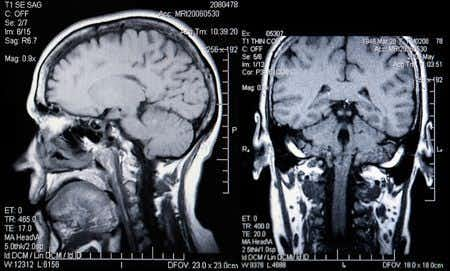This case involves a generally healthy and active forty-five-year old male with a history of multiple sclerosis. The patient experienced a syncopal episode overnight while attempting to urinate. As a result, the patient fell and sustained a blow to the back of the head, losing consciousness. The patient’s wife called their primary care physician to see if she should bring him to the emergency room and the doctor said that it was fine to just observe him closely. Over the next few days, the patient complained of headaches and extreme nausea. The patient was sent for an MRI that indicated a suspicious spot indicative of an aneurysm in the region of the anterior communicating artery, but no further testing or follow-up was conducted. Several months later, the patient was found by his wife on the floor of the bedroom displaying seizure like activity. He was rushed to the ER. The patient was diagnosed with a subarachnoid hemorrhage and was transferred to a tertiary care hospital for emergency surgery. Upon transfer, the patient was then diagnosed with a ruptured anterior communicating artery aneurysm and a micro surgical clipping of the anterior communicating artery with a ventriculostomy was performed. Despite the intervention, the patient remained in a coma for most of the hospitalization. He eventually regained consciousness, but he suffered intractable brain damage, which caused severe paralysis and memory loss. He was transferred from acute rehabilitation to a nursing home, where he remained until his death two years later.
Question(s) For Expert Witness
How familiar are you with clinical situations like the one described above? Would earlier intervention and a more thorough workup have resulted in a better outcome?
Expert Witness Response E-004702
I am very familiar with clinical scenarios such as this and the hospital care should begin with assessment of vital signs and neurological status. Airway, breathing, and circulation should be addressed with endotracheal intubation, if necessary, and establishment of intravenous access. Medical therapy of cerebral aneurysms involves general supportive measures and prevention of complications for individuals who are in the periprocedural period or are poor surgical candidates. Treatment decisions should be based on the clinical status of the patient, vascular anatomy of the aneurysm, and surgical or endovascular considerations. Medical management of aneurysmal SAH is orchestrated in the ICU, with cardiac monitoring and placement of an arterial line. Certainly, earlier intervention would have resulted in a more desirable outcome. However, I will need to know more about this patients presentation to determine if the workup was adequate or not.
About the author
Joseph O'Neill
Joe has extensive experience in online journalism and technical writing across a range of legal topics, including personal injury, meidcal malpractice, mass torts, consumer litigation, commercial litigation, and more. Joe spent close to six years working at Expert Institute, finishing up his role here as Director of Marketing. He has considerable knowledge across an array of legal topics pertaining to expert witnesses. Currently, Joe servces as Owner and Demand Generation Consultant at LightSail Consulting.



